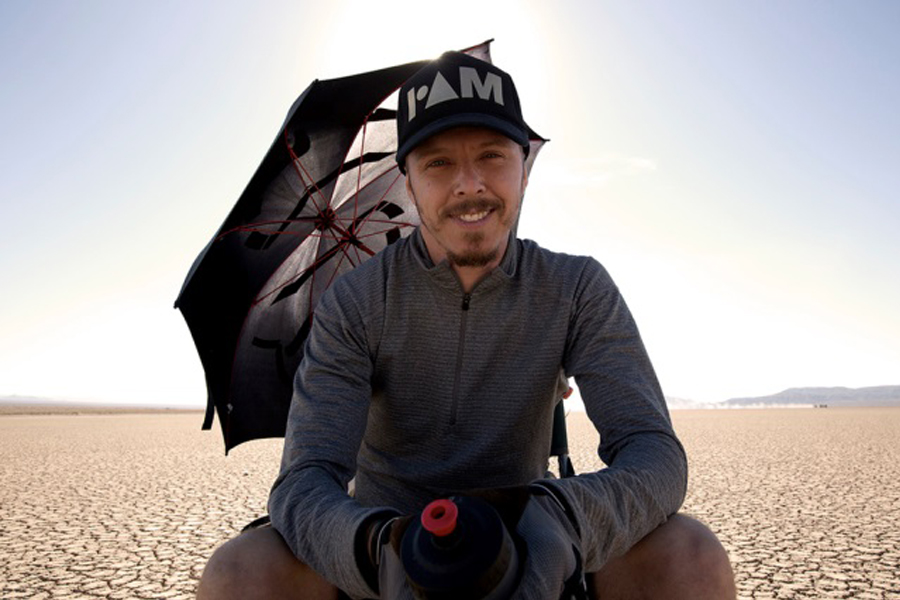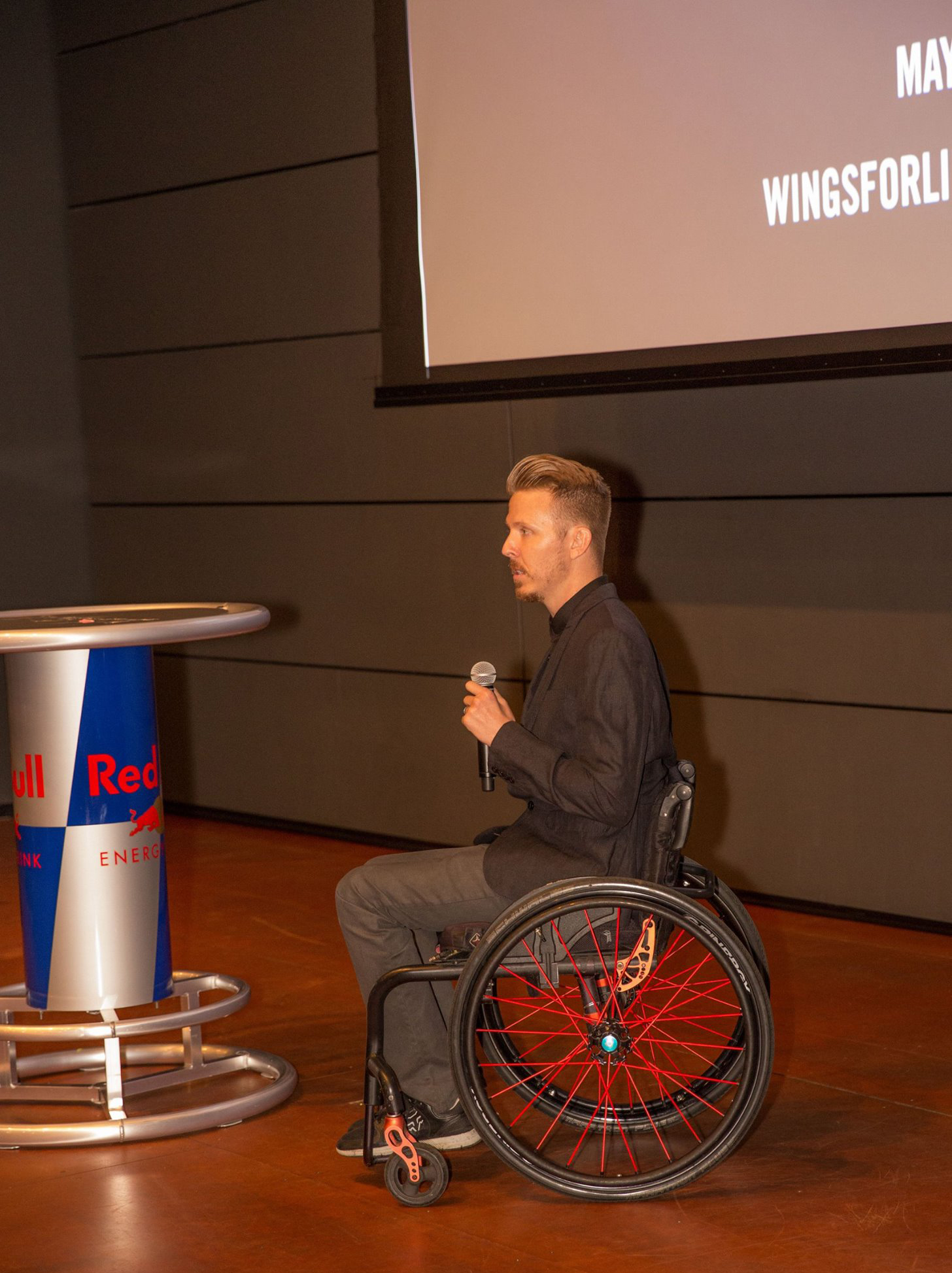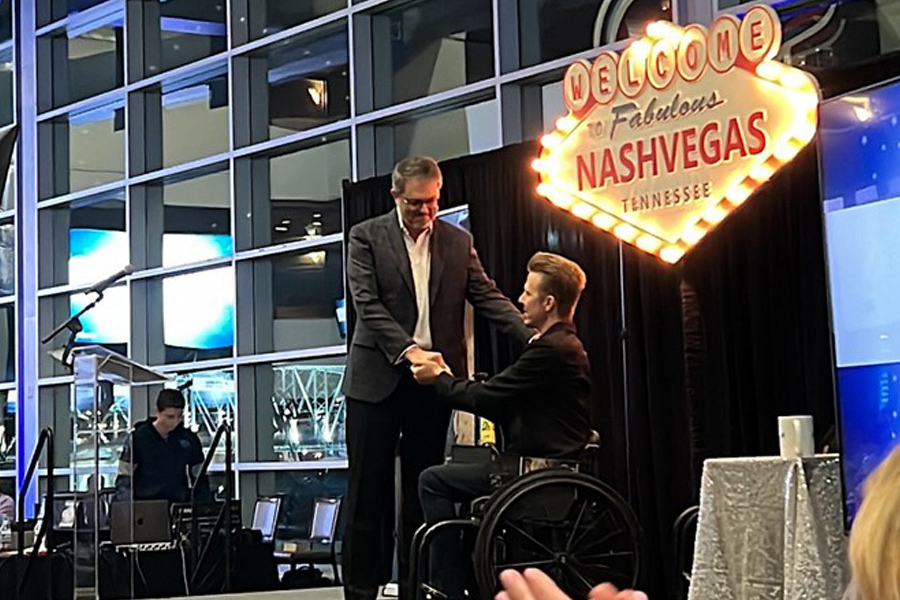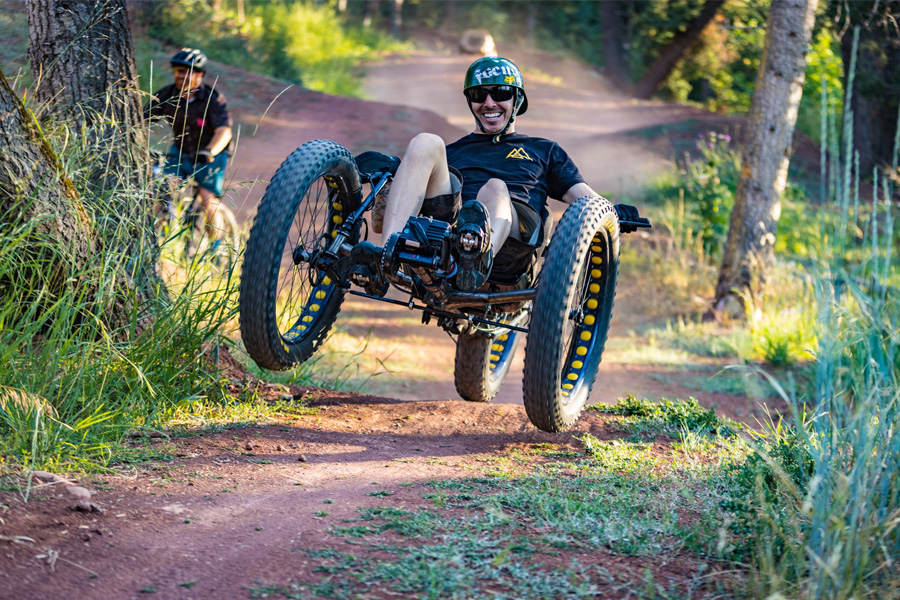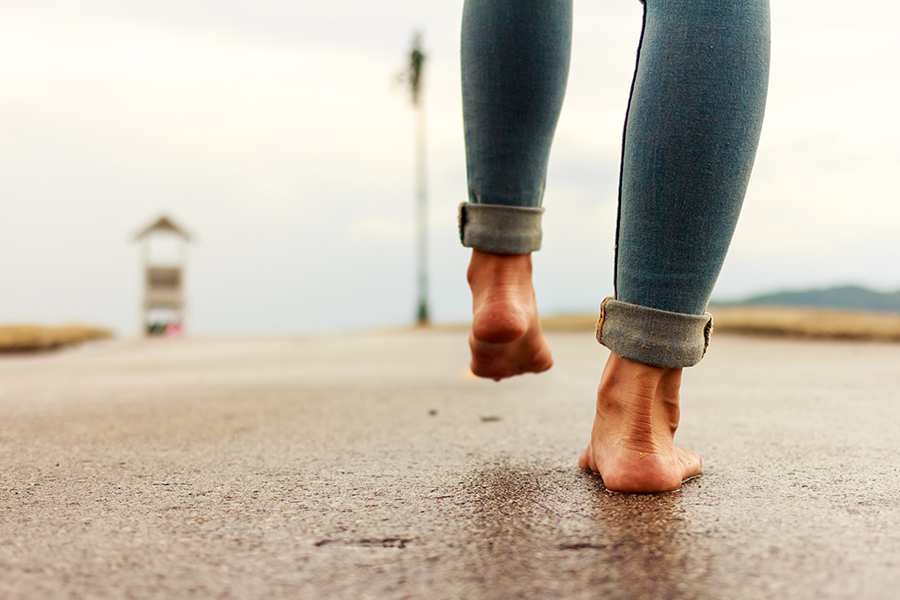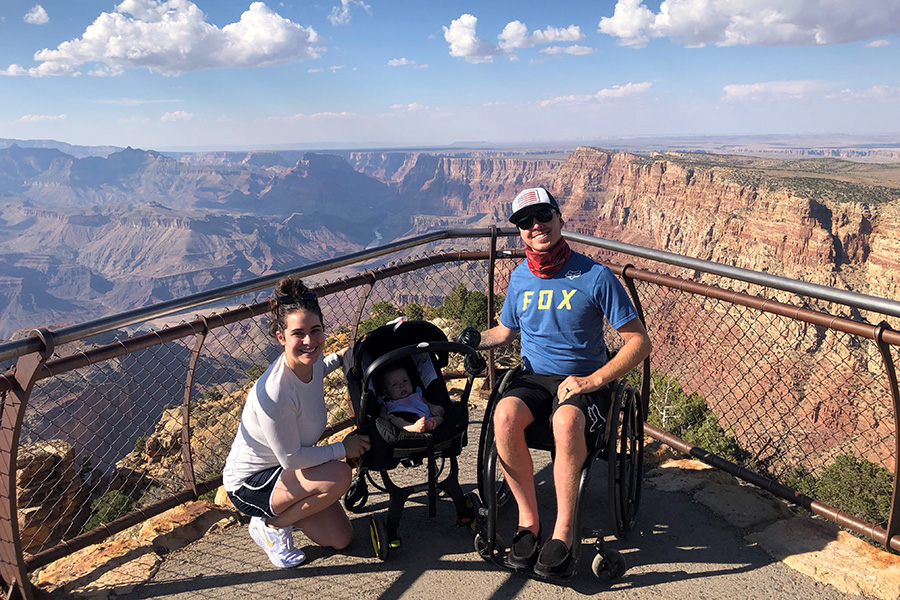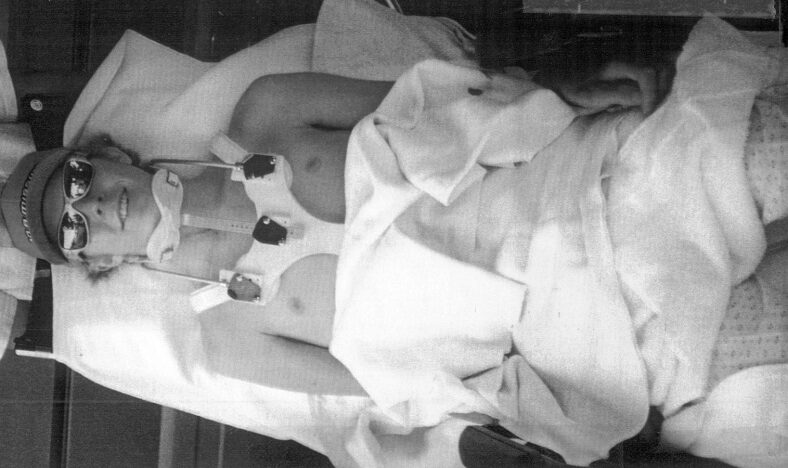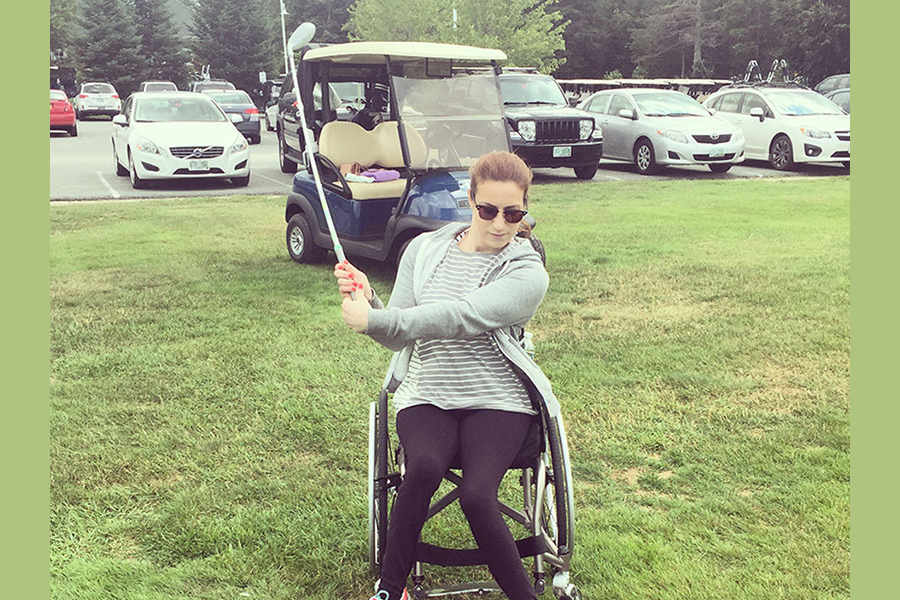This weekend Aaron Baker was at it, just like he always is, almost 24/7. During a stop at the Open Book bookstore in Tampa, Baker was there to sign copies of The Rebellious Recovery, in which Baker wrote about his experiences and his overall approach to life.
Baker, 44, is widely known as a motivational speaker, and he started off his early adult life as a professional motocross athlete. At age 20, his life changed in an instant.
On May 29, 1999, Baker was busy practicing on a local track in Simi Valley, California, to prepare for the upcoming AMA National Motocross Series.
As Baker approached the largest jump on the track, his bike malfunctioned. As he lost speed at a crucial part of his launch, Baker was flung over the front of his motorcycle while still airborne.
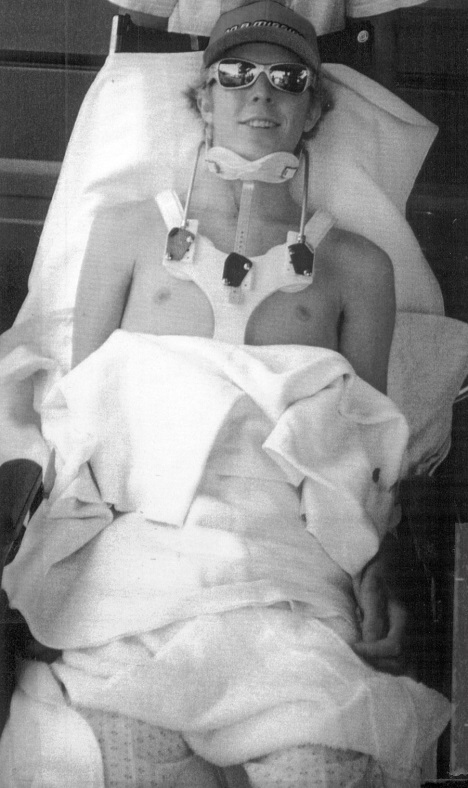 Upon hitting the ground head-first, Baker remembers he lay motionless as friends and onlookers immediately rushed to his aid. Paramedics were called, and Baker was airlifted to Los Robles Regional Hospital in Thousand Oaks, where doctors later told him he had broken several vertebrae, completely shattering the 5th cervical vertebra in his spine.
Upon hitting the ground head-first, Baker remembers he lay motionless as friends and onlookers immediately rushed to his aid. Paramedics were called, and Baker was airlifted to Los Robles Regional Hospital in Thousand Oaks, where doctors later told him he had broken several vertebrae, completely shattering the 5th cervical vertebra in his spine.
“You will always have to rely on help from others,” Baker remembers being told, by doctors who also gave him, as he recalls, “a one-in-a-million chance of ever being able to feed myself again.”
Today, Baker is quick to point out, however, that very few of the 280,000 people in the United States living with spinal cord injuries were injured the way he was. Baker also hints that he doesn’t regret his time as a motocross star.
“As a rider, you’re going 100 miles per hour, jumping 80 feet in the air. It’s just part of the sport. There’s a calculated risk. What are you gonna do?” But the number of people with spinal cord injury from sports, Baker said, “is a small fraction of it all.”
Instead, many of the people Baker talks with on an almost daily basis acquired their injured through everyday activities that we all deem safe. (In fact, only 3% of spinal cord injuries are the result of action sports.)
“Most people who experience what I experience on a daily basis,” Baker said, then also mentioning that 50% of all spinal cord injuries are from car accidents. “I also know someone who was walking down the street, and a tree limb fell on them.”
Baker acknowledges the impact his bike accident has had on his own life. “There’s muscle atrophy and muscle deterioration,” Baker mentions first. “Right now, my feet are on fire. A lot of people out there are medicated (with painkillers) just to manage that discomfort. I choose not to be, and have to compartmentalize it, to deal with it.”
Knowing the pain and difficulty of it all, Baker spends very little time sitting on the sidelines of life. While his own injuries print everyday challenges for himself and his wife Katelyn in a multitude of ways, feeling sorry for himself isn’t part of Baker’s mindset.
Before self-publishing Rebellious Recovery, a bestseller, Baker co-founded the Center Of Restorative Exercise, and he also represents Red Bull’s charity of choice, the Wings for Life Foundation, as a member of the Board of Directors. He also sits on the Board of Directors for a Los Angeles-based non-profit called Artists For Trauma and has other projects going.
But he said that much of his time when not on-stage talking to crowds as a motivational speaker is spent connecting with others elected by similar injuries as well as their families.
“In a typical week, I take a lot of calls and a lot of correspondence. I speak to a lot of people and their families. I’m someone who fully understands what our mission is.”
Despite everything that’s happened, Baker still considers himself an active adventure athlete. Spending time on his motorcycle is a favorite activity, and he’s also known to golf and skydive.
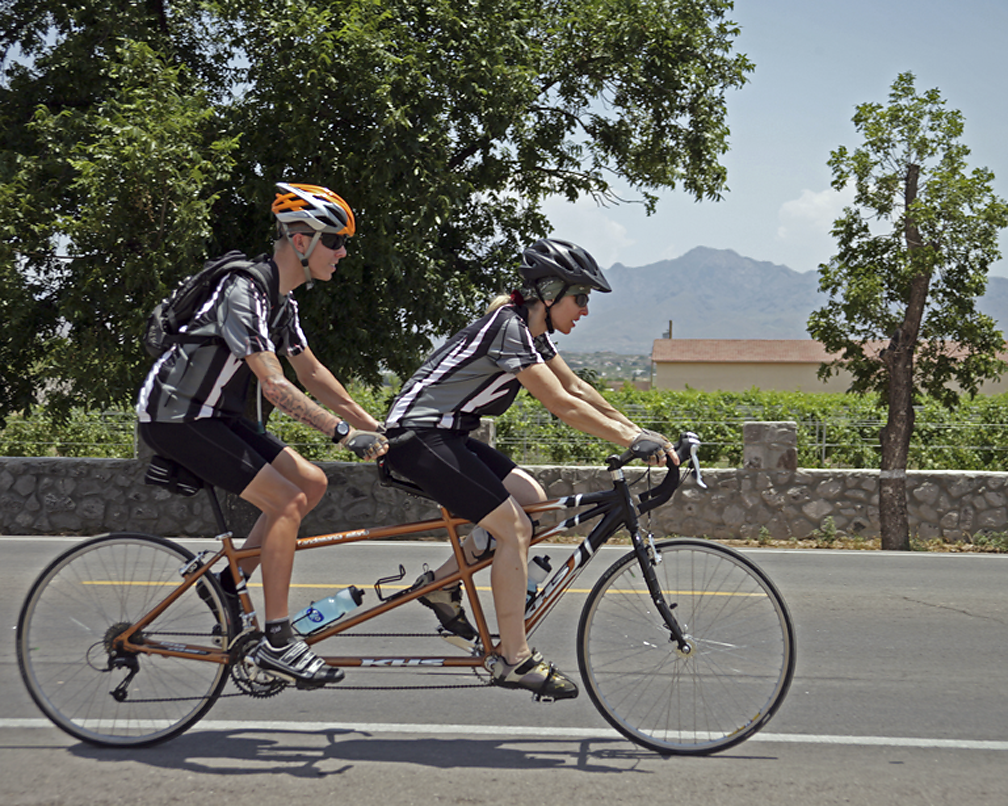 Back in 2007 and 2008, Baker became the first recovering quadriplegic to pedal a bicycle across the United States of America, as a part of the Rise Above US Bicycle Tour. During that tour, Baker pedaled over 7,400 miles across 22 states and visited 26 hospitals, and hit 21 public speaking events.
Back in 2007 and 2008, Baker became the first recovering quadriplegic to pedal a bicycle across the United States of America, as a part of the Rise Above US Bicycle Tour. During that tour, Baker pedaled over 7,400 miles across 22 states and visited 26 hospitals, and hit 21 public speaking events.
Baker said that one thing that sets Wings for Life apart from other spinal cord research organizations and pharmaceutical companies is the required sharing of data among scientists and researchers. He’s also positive and driven as ever about science to finding cures for spinal cord injuries.
“The truth is that this is an injury,” Baker said, “and injuries can heal if provided the right opportunity. We have the technology and so we’re pushing our research as hard as possible.”
Andrew Wagner, the CEO of Wings for Life USA says that athletes like Baker, and race car driver Robert Wickens help draw attention to the severity of spinal cord injuries and the importance of research.
“Our partnership with Red Bull and these incredible athletes is a great way to raise awareness for this important mission,” Wagner said. “Researchers have proven that injured nerve cells are capable of regeneration. We just need to fund research to find treatments to make this happen.”
Another athlete who has rebounded well from a similar injury is Paul Basagoitia. His involvement with Wings For Life started in 2015 after he sustained his own spinal cord injury.
Basagoitia, a 36-year-old BMX bicyclist, was competing at Red Bull Rampage when he crashed during a warm-up. Upon impact, he fractured his T-12 vertebrae and injured his spinal cord, paralyzing him, he explained, “from the belly button down.”
But if you met Basagoitia today, you most likely will see him walking, and he’ll likely tell you about some of his daily cycling adventures.
“It’s been seven years since the incident,” Basagoitia said, then pausing before continuing on. “It’s been a wild journey.” Immediately after the injury, Basagoitia could not move from the waist down. “But about a month after that, my right quad started twitching. Suddenly, that twitch became strong enough to power my quads.”
Shortly after, Basagoitia said he began to be able to move his left quadriceps, and then his right quadriceps showed more activity. Then his hamstrings followed.
“Then, when you know those muscles are working, you try to move and get them as active and strong as possible. So I started PT (personal training) to see how much more I could do.”
Basagoitia, who hails from Southern California, definitely looks it—with a laid-back SoCal demeanor, longish blonde hair, and a slight visage of Logan Paul. Most days of the week now, Basagoitia rides off-road on the dirt hills and other familiar paths surrounding Los Angeles.
Basagoitia adds that after one full year removed from his spinal cord injury, he could walk with two canes.
“Now, seven years on, I can walk short distances without a cane.” While he currently experiences some paralysis “from the knees, below,” Basagoitia said he can still feel in his feet both “temperature and textures.”
To top it all off, this spring, on May 7, the same day of the Miami Grand Prix, Basagoitia was up long before racing festivities to participate in the Wings for Life World Run.
Wagner was also pointed out that, he foundation’s annual global fundraiser run happens simultaneously around the world at the same time to raise money for spinal cord injury research. “With over 200,000 participants this year it is officially the world’s largest charity race,” Wagner said.
Basagoitia talked too about his own participation. “This time around, I did the run with a cane—and I did a mile. Last time I did it was five years ago, and I did almost a mile with two canes,” Basagoitia said. “It was cool to beat my (previous) record and do it with only one cane.”
Basagoitia said that participating in the Wings For Life World Run is inspiring but also touches on his experience.
“I sometimes have flashbacks about how I got here. So it can get a little emotional for me,” he said, noting the many others in the run who participate with less mobility. “People are out there in their wheelchairs. They’re grinding, they’re pushing. It’s just a good vibe.”
In 2019, Basagoitia shared his story in an HBO documentary film called Any One Of Us, which not only profiles not only his own BMX career, injury, and subsequent recovery but also similar experiences of everyday people who are not athletes that deal with the same challenges.
Basagoitia said proceeds from the HBO film go to Wings For Life Foundation to help further research to find cures for spinal cord injury.






